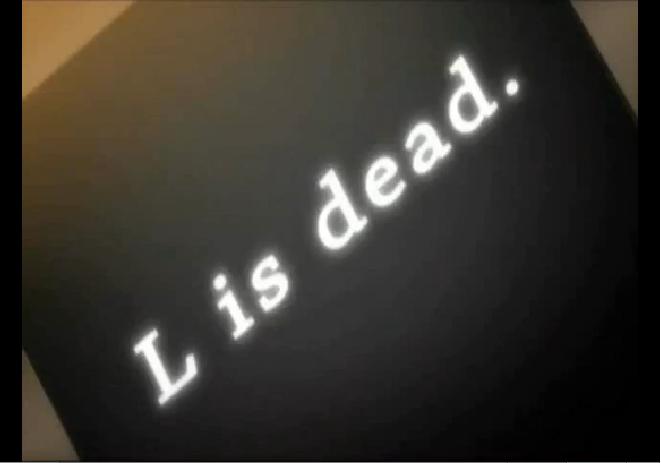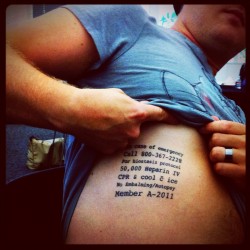
Russian Internet giant Yandex posted a press statement on July 25th about the death of their co-founder Ilya Segalovich. Segalovich, 48 years old and a father of four, was a billionaire and a philanthropist, loved by many for his kindness and hard work to better the Russian Internet and software development field. He reportedly had stomach cancer and had been ill for some time.
News of his death quickly went viral – it was shared on Twitter, Facebook, and many news websites. But hours later, Yandex retracted the press-release to say Segalovich was not actually dead, but was in a coma & on life support, with no signs of brain activity.
Flabbergasted, RuNet users exploded in a new wave of discussion: was Segalovich dead or not?
All this has me thinking about how modern medicine, science, technology and media are changing the conventions of reporting on the deaths of public figures: when is someone really dead? Are they considered gone when an official press release says so? Or when the family releases a statement? But what if they are still breathing (albeit through a ventilator)? When do the media and social network users get to say, “R.I.P., they were a good person”?
History, even recent history, offers examples of people who are “technically” dead, but are not considered such – or at least, this issue is hotly debated. Take Ariel Sharon, the former Israeli prime minister, who has been in a vegetative state for over seven years after a stroke. Earlier this year, there was news that his brain showed signs of activity and even responded to stimuli. So, while the family and the nation have grieved for the loss already, the media continue to find Sharon’s state a source of news and wonder.
Or remember the story of Fabrice Muamba, a 23-year-old British footballer (no, I will not say ‘soccer’!), who collapsed on the field during a match, went into cardiac arrest, was “technically” dead for more than an hour, and was then resuscitated by doctors to virtually complete health? Yeah, that was one for the history books. The media found his back-from-the-dead story fascinating and his recovery was touted as a miracle of nature and modern medicine.

Death is a normal part of life, but it is a subject fascinates the media and the people. We don’t like learning about someone’s death, but we cannot look away. The numerous death hoaxes that regularly roll through the social networks have made people so skeptical that when news of someone’s unexpected death (see: Cory Monteith) rolls around, the first gut reaction is to shout, “It must be a hoax!” But what happens when it’s difficult to determine whether someone has really died or not? What qualifies as death, in a world where technology is causing us to redefine mobility, disability and normality, and where body parts and organs can be replaced with bionic appendages and electronics? When someone is frozen in a cryogenic tub in the hope of future revival, can we say with finality that they’ve died?
As we contemplate the physical aspect of death, there are those who have undertaken to assist us with the metaphysical side of things as well, in an attempt to preserve some form of our conscience or its traces: you can get your Twitter account to keep tweeting after you die and your Google Account data will be passed on to loved ones if you indicate your preference in the account settings. As Facebook memorial pages crop up and Twitter accounts keep tweeting from beyond, how will we even know anymore to tell the dead from the living? And will it matter?
The Brief History of the Dead, a novel by Kevin Brockmeier, describes a place beyond death, a sort of purgatory, called The City. People who find themselves in The City are there as long as someone on Earth remembers them. I imagine that public figures, people who were famous before they passed, would stay in The City forever, since there would always be someone remembering them in news stories, books or student papers. But in a world of microcelebrity, there is always someone who remembers you even if you’re not that famous: someone who liked your photo on Instagram, favorited a Tumblr post of yours, or Storified your tweets from an event. If you are remembered, mentioned and quoted, are you ever really dead? And when news of your death does come, will everyone believe it? Or will they say “Pics, or it didn’t happen“?
Tanya Lokot lives and tweets at @tanyalokot.

Comments 3
Reiss — July 30, 2013
'Or will they say “Pics, or it didn’t happen“?' this made me chuckle.
as humans we are persistently intrigued by death and ways to elude it. which why we subscibe to doctrines and ideas that suggest and in this case provide a pragmatic path to achieve the eternal. this is a very interesting yet superficial approach to evading the inevitable. No amount of social media output will make up for the fact that your body, and more importantly, your consciousness has ceased to exist. However sending scheduled updates and messages from beyond the grave could provide some creepy possibilities, even if you aren't around to enjoy their effect.
Dead or Not Dead? Technology, Media and Death &... — August 4, 2013
[...] Russian Internet giant Yandex posted a press statement on July 25th about the death of their co-founder Ilya Segalovich. Segalovich, 48 years old and a father of four, was a billionaire and a philanthropist, loved by many for his kindness and hard work to better the Russian Internet and software development field. He reportedly had stomach cancer and had been ill for some time.News of his death quickly went viral – it was shared on Twitter, Facebook, and many news websites. But hours later, Yandex retracted the press-release to say Segalovich was not actually dead, but was in a coma & on life support, with no signs of brain activity.Flabbergasted, RuNet users exploded in a new wave of discussion: was Segalovich dead or not?All this has me thinking about how modern medicine, science, technology and media are changing the conventions of reporting on the deaths of public figures: when is someone really dead? Are they considered gone when an official press release says so? Or when the family releases a statement? But what if they are still breathing (albeit through a ventilator)? When do the media and social network users get to say, “R.I.P., they were a good person”?History, even recent history, offers examples of people who are “technically” dead, but are not considered such – or at least, this issue is hotly debated. Take Ariel Sharon, the former Israeli prime minister, who has been in a vegetative state for over seven years after a stroke. Earlier this year, there was news that his brain showed signs of activity and even responded to stimuli. So, while the family and the nation have grieved for the loss already, the media continue to find Sharon’s state a source of news and wonder.Or remember the story of Fabrice Muamba, a 23-year-old British footballer (no, I will not say ‘soccer’!), who collapsed on the field during a match, went into cardiac arrest, was “technically” dead for more than an hour, and was then resuscitated by doctors to virtually complete health? Yeah, that was one for the history books. The media found his back-from-the-dead story fascinating and his recovery was touted as a miracle of nature and modern medicine.Instructions for cryoprocessing (image credit: Whitney Erin Boesel)Death is a normal part of life, but it is a subject fascinates the media and the people. We don’t like learning about someone’s death, but we cannot look away. The numerous death hoaxes that regularly roll through the social networks have made people so skeptical that when news of someone’s unexpected death (see: Cory Monteith) rolls around, the first gut reaction is to shout, “It must be a hoax!” But what happens when it’s difficult to determine whether someone has really died or not? What qualifies as death, in a world where technology is causing us to redefine mobility, disability and normality, and where body parts and organs can be replaced withbionic appendages and electronics? When someone is frozen in a cryogenic tub in the hope of future revival, can we say with finality that they’ve died?As we contemplate the physical aspect of death, there are those who have undertaken to assist us with the metaphysical side of things as well, in an attempt to preserve some form of our conscience or its traces: you can get your Twitter account to keep tweeting after you die and your Google Account data will be passed on to loved ones if you indicate your preference in the account settings. As Facebook memorial pages crop up and Twitter accounts keep tweeting from beyond, how will we even know anymore to tell the dead from the living? And will it matter?The Brief History of the Dead, a novel by Kevin Brockmeier, describes a place beyond death, a sort of purgatory, called The City. People who find themselves in The City are there as long as someone on Earth remembers them. I imagine that public figures, people who were famous before they passed, would stay in The City forever, since there would always be someone remembering them in news stories, books or student papers. But in a world of microcelebrity, there is always someone who remembers you even if you’re not that famous: someone who liked your photo on Instagram, favorited a Tumblr post of yours, or Storified your tweets from an event. If you are remembered, mentioned and quoted, are you ever really dead? And when news of your death does come, will everyone believe it? Or will they say “Pics, or it didn’t happen“? [...]
The Impact Of Technology Reading List: Blaming Reddit Misses The Point - — August 9, 2013
[...] “If you are remembered, mentioned and quoted, are you ever really dead?” [...]